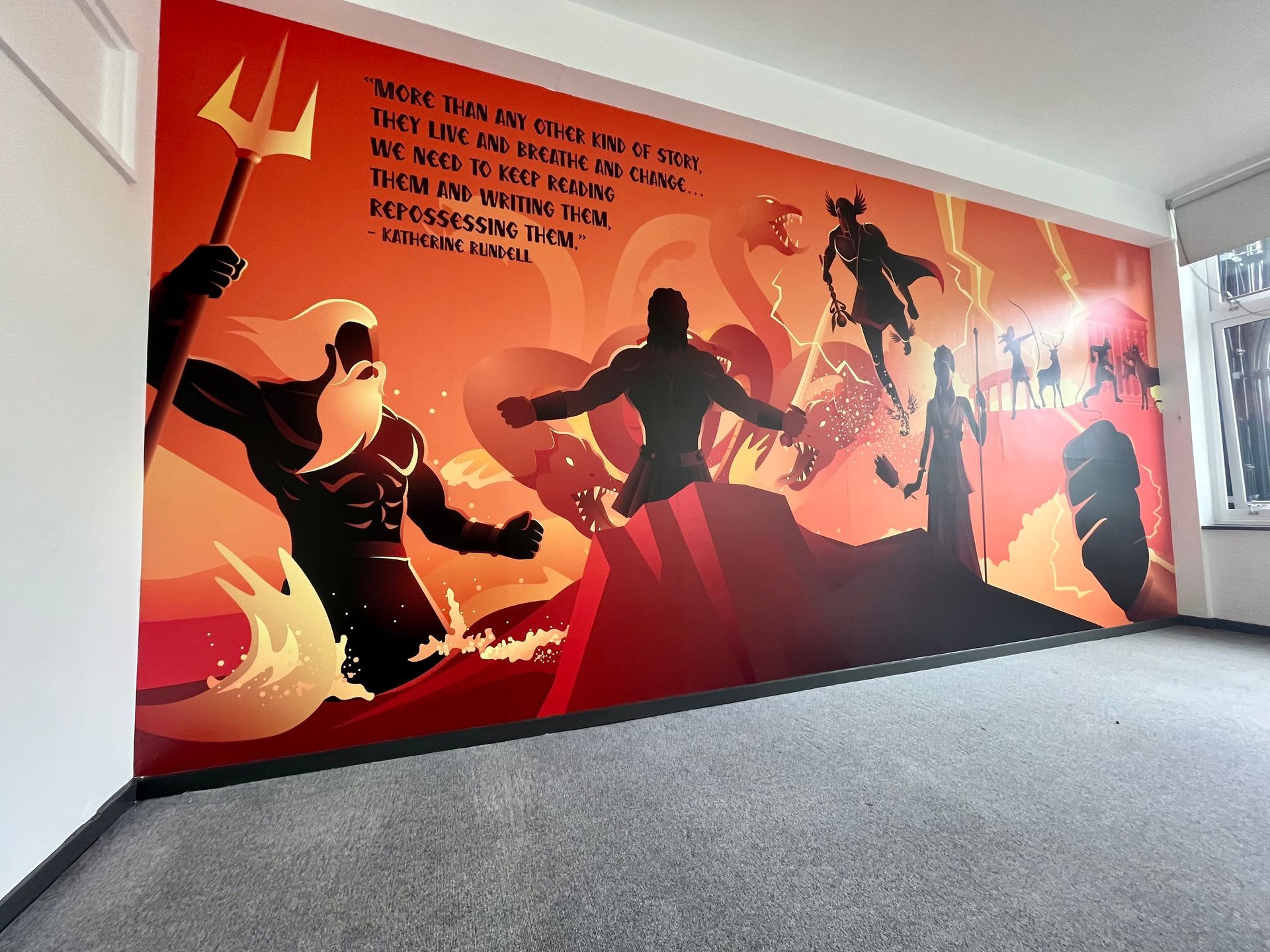Looking for other items, visit CUBED GROUP
Impact on pupils 34
Using aids like graphics can assist students in remembering information better through mnemonic devices in a visually appealing way; for example, a graphic illustrating the rainbow's colours and corresponding mnemonics can help them recall the sequence more effectively. Children tend to learn effectively when their senses are engaged in various ways simultaneously; bright and colourful wall graphics can enhance visual stimuli and can be combined with different textures for tactile stimulation or interactive elements for movement to accommodate diverse learning preferences.

Boosting Education through Memory Assistance and Engaging Stimuli
Designing wall graphics that include memory aids and sensory features can significantly improve students’ retention of information. These graphics stimulate different senses, leading to a more immersive learning journey.
Important Design Aspects for Memory Assistance Programs
Ways to Remember Information Better;
- Utilise visual aids like a rainbow, with colour labels and the memory aid "ROYGBIV" to help recall the order of colours easily.
- Use abbreviations and catchy phrases in the visuals to help people remember information easily (for example, "Every Good Boy Does Fine" for notes on a staff).
Interactive and captivating visuals;
- Using colours to categorise information can help students more effectively organise and recall-related content.
- Break down information into step-by-step instructions, incorporating visual aids and memory tricks to assist students in retaining the sequence of procedures.
Essential Aspects of Design for Engaging the Senses
Colourful imagery;
- Incorporate bold colours with contrasting hues to grab attention and awaken the visual senses.
- Create captivating designs that catch the eye and inspire curiosity.
Touchable aspects;
- Incorporating Textures for a Hands-On Experience: Introduce tactile components, like rough and smooth surfaces, to explore and effectively stimulate the sense of touch in learning environments for students of all ages and abilities.
- In the graphics, use three-dimensional elements such as raised letters or shapes that students can touch to enhance the experience with a tactile dimension.
Incorporate touch-sensitive elements that respond with feedback, like lights or sounds, when touched.
Incorporate elements such as spinning wheels or sliding panels that students can interact with to explore various ideas and concepts.

Strategic Positioning for Optimal Effectiveness.
"School classrooms are learning spaces."
- Let's designate walls in each classroom to use mnemonic devices and memory aids related to the subjects taught in that room.
- Build corners featuring tactile and movable elements that encourage students to engage with the material provided actively.
- Create pathways that include textures and colours, with interactive features to inspire people to move around and explore.
- Utilise hallway sections to showcase mnemonic tools that can be adjusted to match the current taught topics.
Common Recreational Areas;
- Enhance the environment with walls that offer a range of textures and engaging elements for students to enjoy during their breaks or playtime.
- Let's incorporate murals that blend academic information with sensory features, like a tactile world map or a three-dimensional food pyramid.
Approach to Execution
- Let’s work together on designing the project.
- Incorporate teachers and students into the design phase to guarantee that the visuals align with objectives and connect with their real-world encounters.
- Experienced designers who specialise in settings collaborate with professional designers to craft visually captivating and engaging visuals.
Selecting the materials;
- Select safe materials that are non-toxic for kids to play with.
- Choose friendly alternatives by selecting sustainable materials to support environmental accountability.
Professional Setup and Installation;
- Ensure an expert does your installation to guarantee safety and a pleasing outcome while preventing alignment or damage problems.
- Make sure to place images at a level kids can easily see and reach.
- Selecting materials covers the maintenance and updating tasks that need to be done.
- Remember to set aside time for upkeep and cleaning to keep your visuals vibrant and captivating.
- Let’s schedule updates to bring fresh ideas and maintain an engaging and dynamic environment.
Types of Visual Reminders and Decorative Wall Art to Enhance Memory
The colourful reminder wall;
- A vibrant mural illustrating a rainbow with each colour identified and the acronym "ROYGBIV" prominently showcased.
- Visual cues are helpful for students to recall the sequence of colours in a rainbow.
A wall adorned with a range of textured alphabet designs;
- Create an alphabet display featuring a variety of textures for each letter (such as sandpaper for 'a' and velvet for 'b') that kids can touch and experience.
- Stimulates the sense of touch. Assists children in connecting letters with hands-on experiences.
The Life Cycle Wall with features is the third item on the list.
- A mural depicting the stages of a butterfly's complete life, with interactive elements that students can move to observe each phase up close and personal.
- Having an impact offers a learning opportunity that strengthens understanding of the various stages of life through engagement.
Sensory Pathway;
- A hallway pathway features textures and colours alongside interactive elements like stepping stones and touch-sensitive lights, with sound buttons incorporated as well.
- Encouraging people to move and explore can stimulate different senses and foster hands-on learning experiences.
Concluding Ideas:
Adding memory aids and sensory elements to wall designs can significantly improve students’ memory retention and interaction with content. These visual aids not only enhance the aesthetics of the learning space but also offer valuable academic advantages by accommodating various learning preferences and encouraging active involvement. Adopting this method creates a positive attitude towards learning, sparking curiosity and setting the groundwork for future educational achievements.










